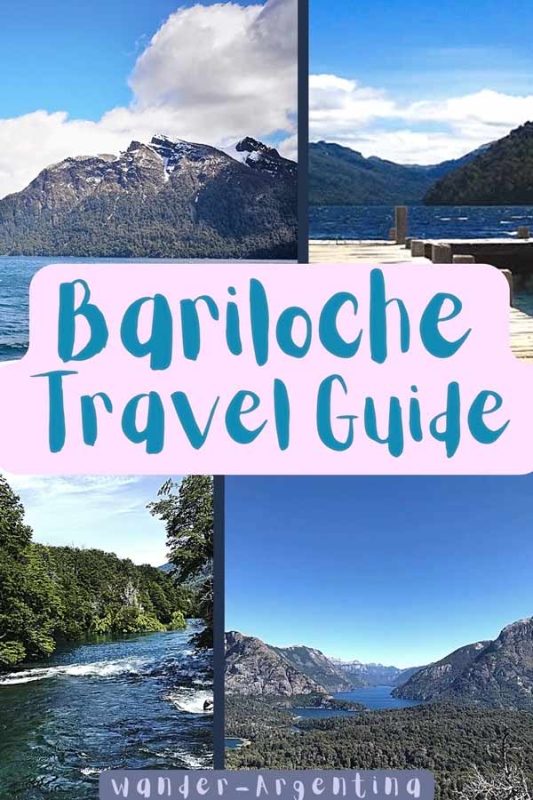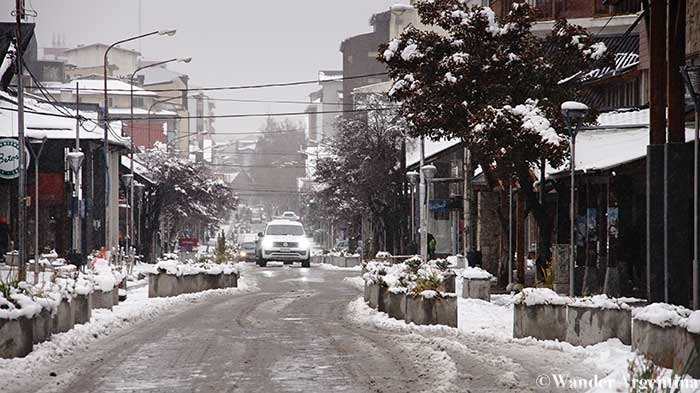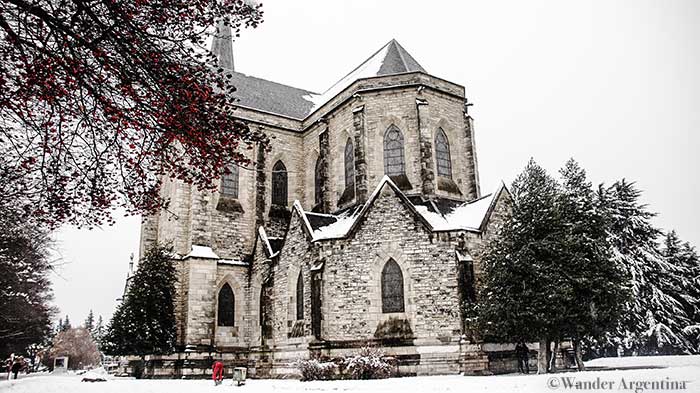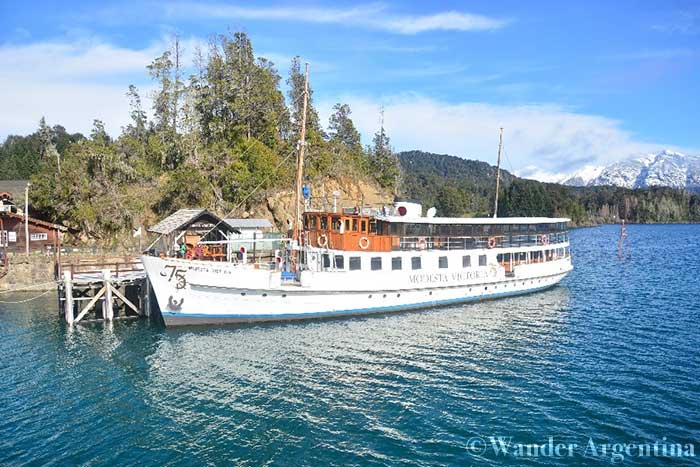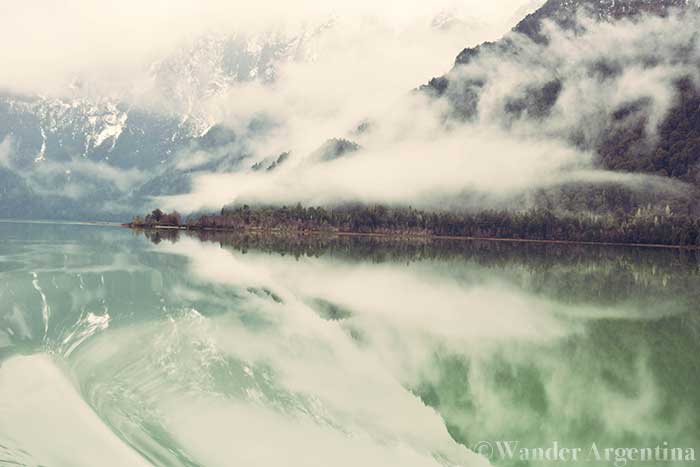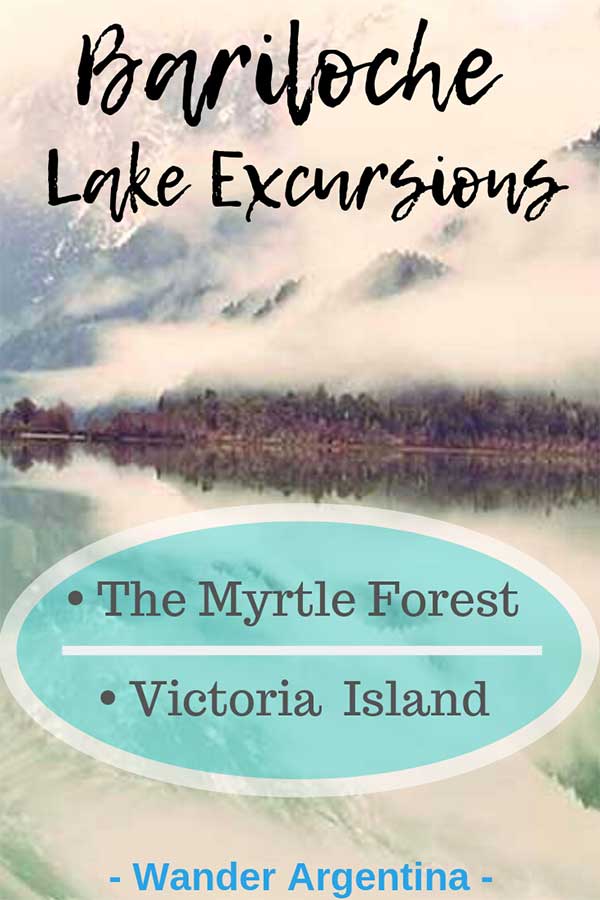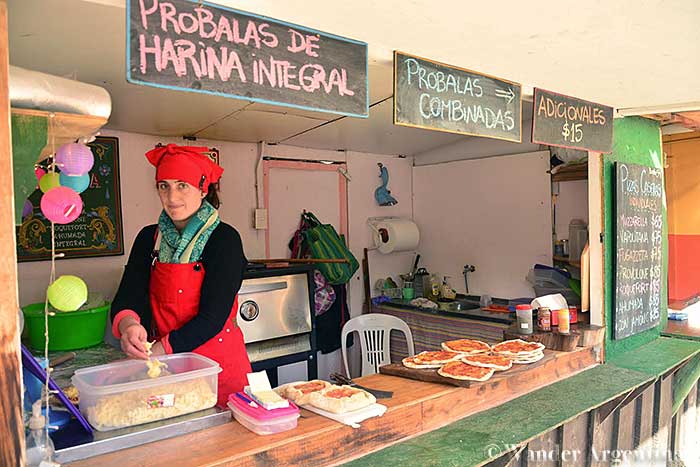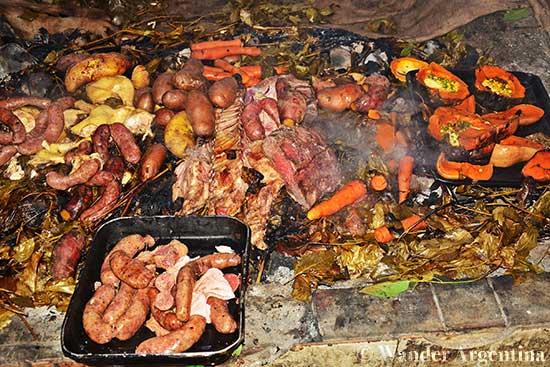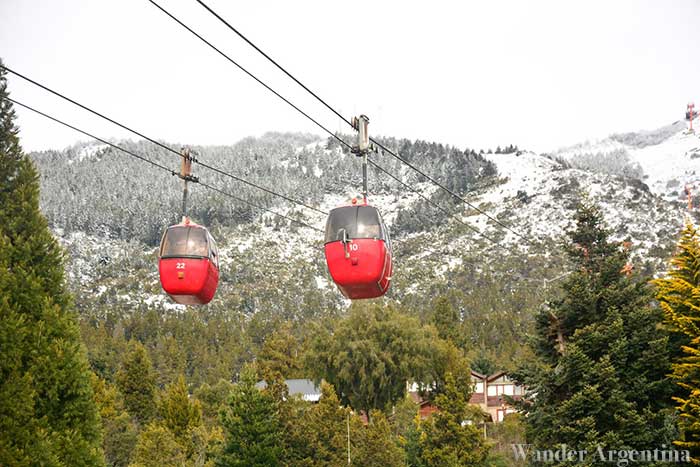Bariloche, nestled along the shore of Lake Nahuel Huapi and surrounded by snow-capped peaks serves as the gateway to the playland of Patagonia.
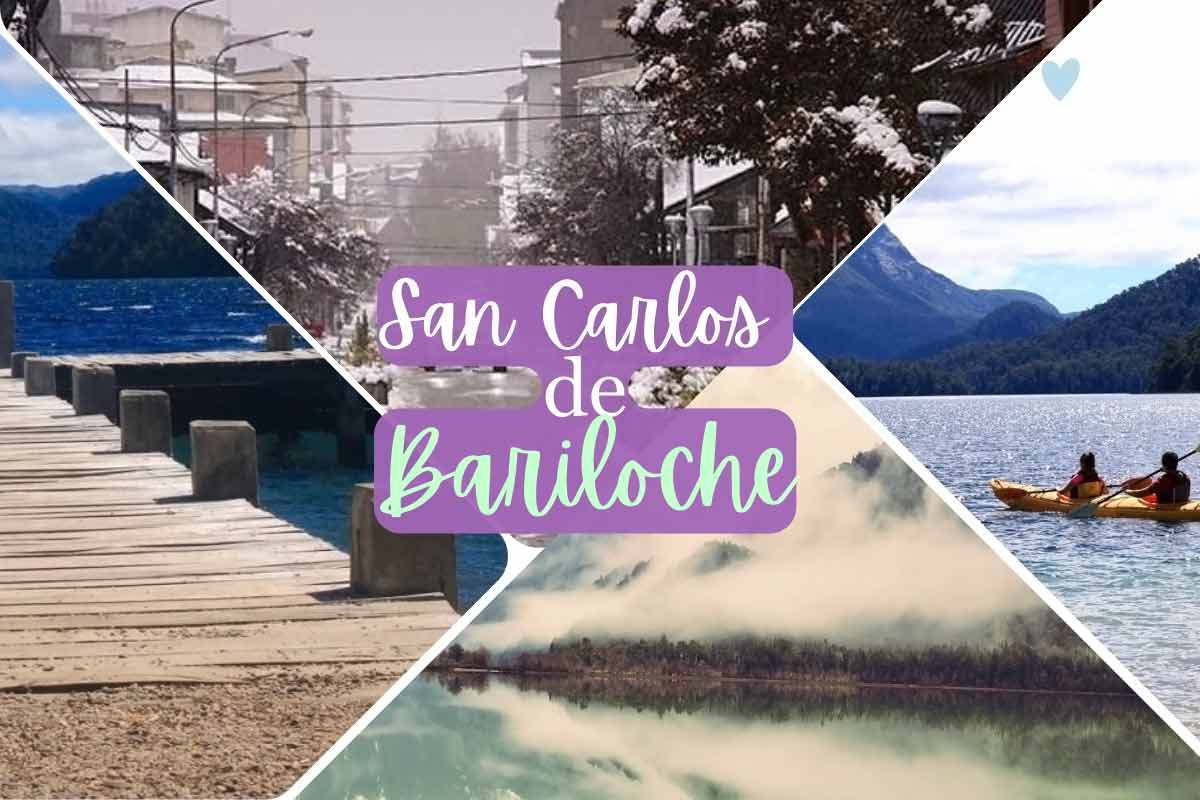
The Rio Negro province’s largest city offers not only postcard-worthy views but alpine-style comforts from which to explore Argentina’s Lakes District.
Ever since Europeans landed in the area, Bariloche has been called the ‘Switzerland of Argentina’ due to the cultural influence of the immigrants who settled here.
Establishing Argentina’s ‘Switzerland’
In 1895, Carlos Wiederhold, a Chilean of German descent, built a general store in Bariloche called ‘La Alemana’ (‘The German’).
Seven years later President Julio Argentino Roca, — eager to secure claims of Argentinean land in Patagonia amidst border disputes — officially decreed the village an agricultural settlement named ‘San Carlos de Bariloche,’ after its founder.
Although remote — it’s 1650 kilometers from Buenos Aires — the area’s natural beauty meant Bariloche was destined to develop into a coveted holiday haven.
In 1903, academic and explorer Francisco ‘Perito’ Moreno donated 19000 acres of land here to the government, paving the way for the creation of Argentina’s national park system in 1934.
Argentina was one of the world’s richest nations at the time and was the third country to establish a national park system, after the United States and Canada.
Originally known as Parque Nacional del Sur, Nahuel Huapi was Argentina’s first national park, followed closely by Iguazu Falls National Park.
Today Nahuel Huapi National Park spans over two million acres and includes the city of Bariloche.
Argentina’s economic crisis at the turn of the 21st century meant suddenly the country was affordable for foreigners. The city welcomed more international visitors than ever before, particularly from Israel and Europe.
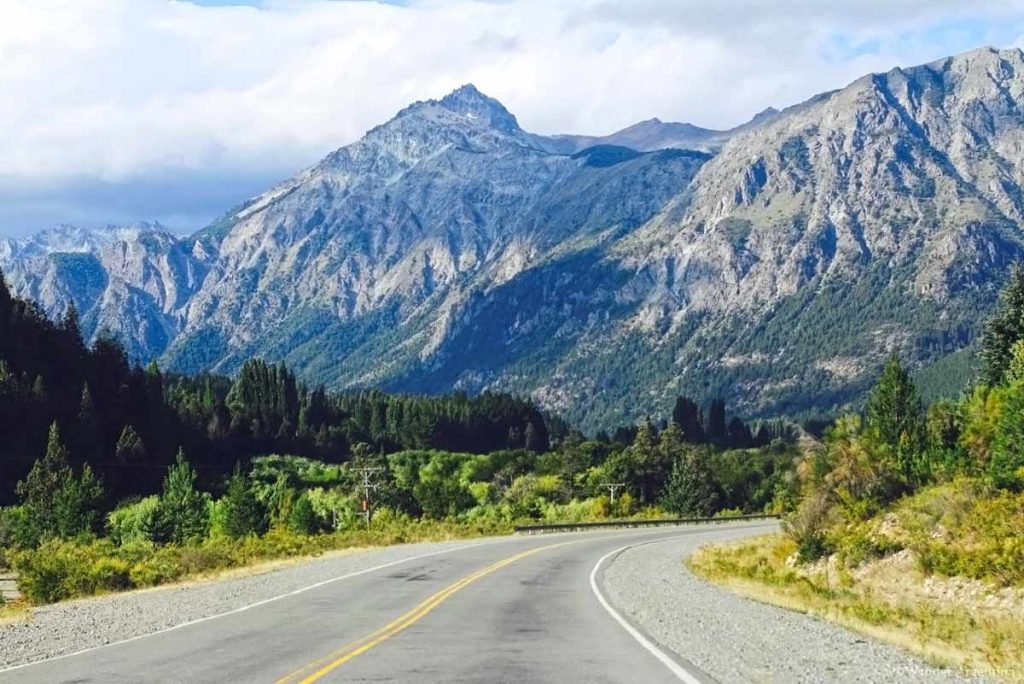
Today, the town is nicknamed ‘Braziloche’ thanks to its popularity with vacationing Brazilians.
Locals in the tourism industry speak not only English, but also Portuguese – or at least the Spanish-Portuguese mix dubbed, ‘Portuñol.’
With a thriving chocolate industry and romantic getaways such as Isla Corazon (Heart Island) Bariloche is also famed as a honeymoon destination.
The Indigenous People of Bariloche
Hunter-gatherer tribes migrated south to this area at least 10,600 years ago.
Three native tribes occupied the Nahuel Huapi area: the Puelches in the mountain grasslands, the Tehuelches along the eastern and southern shores of Nahuel Huapi Lake, and Mapuche who lived along the northern part of the Limay river up to Lanin Volcano.
Small groups of families lived clustered together and used the lakes and rivers as trade routes.
The Spaniards first landed in Lake Nahuel Huapi in 1620 but it wasn’t until 1760 that Jesuit missionaries began to document the native population here.
The Mapuche people were universally recognized as the most courageous natives in the area. They spoke ‘Veliche’, a dialect of ‘Mapudungun,’ a language shared among different tribes stretching from Aconcagua to southern Patagonia.
‘Bariloche’ got its name from the Mapudungun word ‘Vuriloche,’ or ‘people who live between the mountains.’
(The common Argentine address of ‘che’, meaning ‘people’ also comes from Mapudungun.)
While the original Jesuit missionaries, led by Father Nicolo Mascardi, lived peacefully with the locals, the tribes withheld their secret trade roots from the foreigners, which initially helped them defend their territory throughout Patagonia and Chile’s Araucania region at the start of the government’s deadly ‘Desert Conquest’ campaign.
The military campaign, led by then-General Julio Argentino Roca decimated the indigenous population.
Thousands of Mapuche were killed in the fighting and tens of thousands were displaced.
In the 135 years since the Mapuche have continued to experience marginalization and human rights abuses.
It wasn’t until 2006 that the indigenous remaining in the area received reparations for their lost legacy.
The restitution, managed by the Nahuel Huapi National Park administration, includes property rights of ancestral lands for three Mapuche communities and a co-management program of the national park.
The Lof-Wiritrai, who live on the northeast shores of Mascardi Lake, operate a camping and a cultural center.
The Lof-Huenchupan, run the Villegas River area along route 40 on the way to El Bolson. They focus on native sustainable practices such as harvesting rainwater and replanting native trees and medicinal plants.
The Lof-Kinxikex, who settled in the northern area of the National Park en route to Villa la Angostura and Los Arrayanes National Park, oversee a hunting area and commercial craft workshop.
In recent years, tensions between the Mapuche and the Argentine government have increased as capital interests come head-to-head with the ancestral land claims of the minority indigenous community.
Native Folk Tales of the Region
A few Mapuche stories are still well-known among Bariloche locals.
The most popular is the folk tale of Nahuelito — Argentina’s version of the Loch Ness Monster.
The original Mapuche story, called ‘trülke wekufü‘ meaning ‘leather,’ refers to a mythical cowhide that turns into a mutant creature similar to a large snake.
In 1988 Río Negro’s daily newspaper published a picture of a strange creature on the lake, reviving the legend.
Modern versions of the Nahuelito legend claim the creature inhabiting in the waters of Lake Nahuel Huapi is similar to an ancient plesiosaur.
The story of Nahuelito endures although the lakes of Patagonia were formed long after the extinction of dinosaurs.
Andean Cave Art
Nahuel Huapi National Park contains 88 archaeological sites considered ‘sites of National Importance’ by the nation’s Culture Ministry.& Andean Cave Art.
Forty-eight of the sites contain historic rock art. The cave drawings provide insight into the native population’s world-views, with multicolored human and animal motifs.
Hikers can visit these sites on their own by renting a car or hiring a local driver familiar with the area.
The Creation of Bariloche’s Downtown
In the 1930s Argentine National Park service’s director, Exequiel Bustillo, hired his brother Alejandro to create a ‘garden city’ that would serve as the hopping off point to Nahuel Huapi National Park.
The cathedral, and local iconic hotels such as Llao Llao and Puerto Blest Hostel were built in the trademark Bariloche style with cypress wood and larch tiles.
In 1940 the Bariloche Civic Center was inaugurated.
The stone complex, shaped like the letter U, was meant to be ‘one-stop shopping’ for everything including city hall, the central library, the customs office, post office, a telegraph office and the town’s main museum.
The civic center was declared a National Historic Monument in 1987.
Bariloche’s downtown hasn’t changed much since it emerged as a holiday destination in the 1930s, aside from more lodging establishments and the retirement of the telegraph office.
Downtown Bariloche: Attractions & Activities
Downtown Bariloche can easily be explored by foot.
The Civic Center plaza remains a central meeting spot. An enduring pastime for tourists strolling through the plaza is to snap a photo with a Saint Bernard dog, the unofficial mascot of Bariloche.
The Francisco P. Moreno Patagonia Museum in the Civic Center is small but worth a visit for its quirky curation.
The museum’s exhibits span the area’s prehistoric indigenous civilizations through to the colonial conquest, up until modern day Bariloche.
The permanent exhibit of Patagonia’s unique flora and fauna highlights endemic species such as the Challhuaco frog and the endangered but nevertheless hearty bucktooth rodent called the Colonial Tuco Tuco (Ctenomys sociabilis).
The nearby Cathedral of Our Lady of Nahuel Huapi, named for the patron saint of Bariloche, is the town’s iconic neo-gothic cathedral.
The 1944 church rests overlooking the lake near the civic center. Peek inside to see the stained-glass panel depicting the stations of the cross.
The rose garden on the grounds are also a popular spot for photos in spring.
For a less pious attraction, head to the Ice Bar on Spain St., near Bariloche’s main street, Mitre.
The bar, made entirely of ice, is open all year and is where a ‘yeti’ greets visitors with a fur coat to warm them up on a cold winter day.
There are two public ice-skating rinks in town where visitors can rent skates and take whirl.
Downtown on Mitre Street is a rink in the popular Rapanui artisanal chocolate shop and cafeteria, which is a worthwhile stop on its own for a hot chocolate after burning some calories on the ice.
A couple of blocks away along the shore, is Nevinska Bariloche, another ice rink where visitors can take a class on Saturday mornings.
Shopping for Unique Items in Bariloche
Bariloche is known more for its activities than its shopping, but there are a handful of downtown boutiques with beautiful handmade items.
The municipal handicraft fair takes place in the summer, behind the Civic Center in the Derechos de la Mujer plaza.
Some of the most unique items to take home are the clothes and blankets made with hand-spun and dyed wool created by the Zuem Mapuche collective at Moreno and Villegas streets.
At other times of year check out the La Casa de los Artesanos at Ada María Elflein and Morales streets.
Serious shoppers will want to visit the largest handicraft fair in the region, a couple of hours away in the laid back town of El Bolson, where an outdoor craft fair takes place three days a week.
Patagonia’s Best Cuisine
Bariloche is Patagonia’s most celebrated destination for gastronomy, as Anthony Bourdain discovered in 2007 filming his program here.
There are more than 450 food establishments, including smoke and grill houses, homemade pasta shops, wood-fired pizza restaurants, tea houses, jam factories, bakeries, pastry and Bariloche’s famous chocolate shops.
Local specialties reflect the influence of European immigrants here.
Delicious dishes such as goulash, fondue, lightly sauced red or white meats such as wild boar and venison accompanied by regional mushrooms, papillote cooked trout or salmon, with white wine and black butter, and thanks to Argentina’s Italian roots, plenty of fresh pasta.
Serious carnivores won’t want to miss Patagonia lamb (cordero) grilled over a firewood pit, or Argentina’s typical, ‘parrillada’ (grilled meats), prepared by an expert asador, which always solicits an applause for the grill chef.
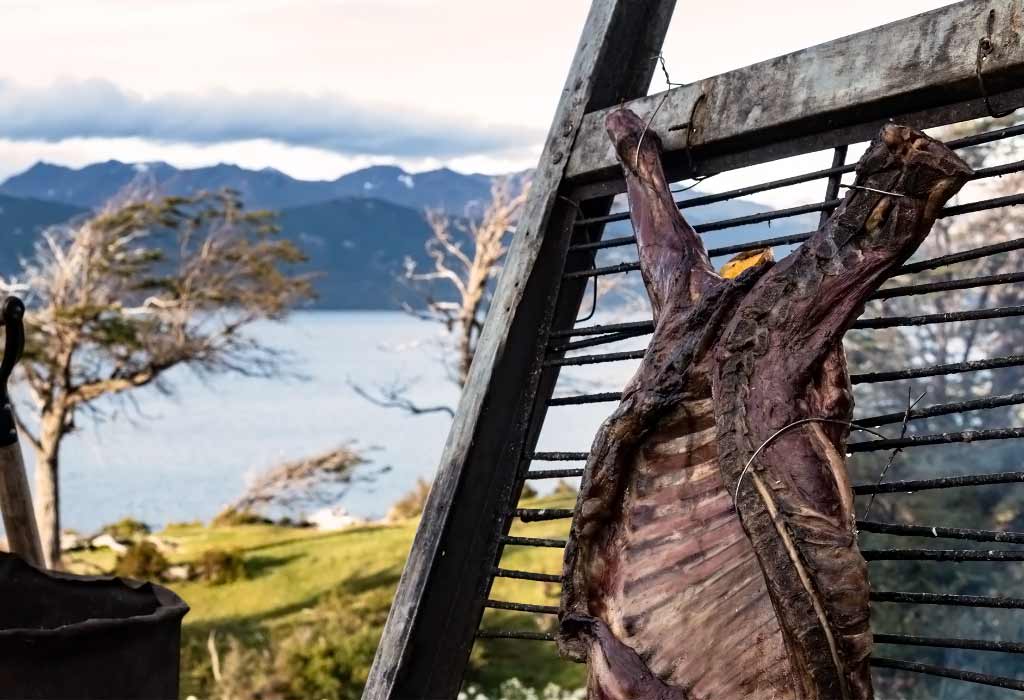
Among the unique high-end dining experiences in Bariloche is La Cueva Restaurant, set in a cave that can only be reached by quad bike or snowmobile.
Another esteemed restaurant in Bariloche that has hosted well-known guests over the years is El Patacón.
For typical Patagonic food that it a little less pricey, try the family-run El Chucaro.
To try the native dish of curanto brought from Chile and adapted to Argentina, head to Colonia Suiza (the Swiss Colony). Ask for ‘Gringo Goye’ to be pointed in the right direction.
Get to the Swiss colony before noon to experience the entire ceremony including lighting the fire and dining three hours later.
Patagonia Sweets and Desserts
Patagonian dessert options abound: mousses, sweet pastries, artisanal ice-cream, hot brownies, and crepes Suzette with sweet natural berries that thrive in this area: raspberry, cherries, boysenberries, blackberries, elderberry and rose hips.
Bariloche is most famous for its chocolate, ranging from milk chocolate to dark unsweetened chocolate with 100% cacao.
Chocoholics will want to make a beeline to Mamushka, Bariloche’s most renowned chocolate shop. They also have ice cream and continually are inventing new flavors, such as pineapple and ginger and almond honey-cinnamon nougat.
Chocolate lovers on a budget usually head to the nearby ‘Del Tourista,’ also known as the ‘Tourist Shop,’ for free samples and to stock up on more affordable chocolate.
Booze unique to Bariloche
While the most popular Argentinian wines are produced in Mendoza, Cafayate, and the Neuquén and San Juan provinces, Río Negro has its own ‘wine route’, with wine cellars such Emilce Notaro and Bodega Humberto Canale.
Local fine wines and champagnes from the coldest zones of the Rio Negro Valley will surprise connoisseurs.
When it comes to booze though, Bariloche is most celebrated for its hand-crafted beer.
Most people order the local bitter red IPA, made with regional hop that is hard to find anywhere else, apart from the United States.
One of Argentina’s most recognized breweries, ‘Cervecería Patagonia’ is 20 kilometers from downtown.
Today owned by the Anheuser-Busch group, the brewery is surrounded by its own hops plantation and offers Instagram-worthy views overlooking the city.
Patagonia’s Amber Lager was Patagonia’s original variety.
In 2010 they introduced the Bohemian Pilsener and Weisse.
In 2015 they released their Patagonia Pale Ale, named ‘Küné’ meaning ‘twins’ in Mapuche, in honor of the Victoria and Mapuche hop used in its preparation.
Visitors can check out the brewery as part of the Seven Lakes Tour or by renting a car.
Budget travelers can take bus number ten from downtown Bariloche to reach the brewpub. Happy hour is from 6:30 until 8:30 p.m.
Another pub beer lovers won’t want to miss is Cerveceria Blest, the area’s first microbrewery, which opened over 30 years ago.
For artisanal beer downtown, try Manush, popular with locals for its beer and ample something-for-everyone menu. Manush has a location in the center of Bariloche and another outside of town along the water toward Villa Campanario and Villa Suiza.
To try the ultimate Bariloche treat, RapaNui chocolate shop offers a Berlina Imperial Stout and a Chocolate RapaNui ‘Choco beer’, made with 90% cacao from Colombia.
→ Wondering what that cubierto charge on your restaurant check is and how much to tip? Read our FAQ for Dining in Argentina
Bariloche Lake Tours
Patagonia lake excursions are a classic in Argentina that everyone from retired couples to families with small kids, school groups and independent travelers enjoy.
The two most common lake excursions are Isla Victoria and the Arrayanes Forest, and Puerto Blest.
Isla Victoria (Victoria Island)
The boat that goes to Isla Victoria is the famous Modesta Victoria. Eva Duarte de Perón, Barack Obama, and Argentina’s former President, Mauricio Macri have all ridden this boat.
Known as the ‘Lady of the Lake’ it is a European-style navy boat.
The 39-meter-long boat was built in Amsterdam in 1937. It has three teak-wood decks, bronze fittings, alabaster lampshades and a specially designed rudder.
The tour rides along Lake Nahuel Huapi for an hour before reaching the Quetrihué Peninsula.
Disembark to walk along an easy path of boardwalk through the Arrayan (Myrtle) Forest, a landscape which inspired animator, Walt Disney, before reaching the ‘Casita del Bosque‘ (Forest House).
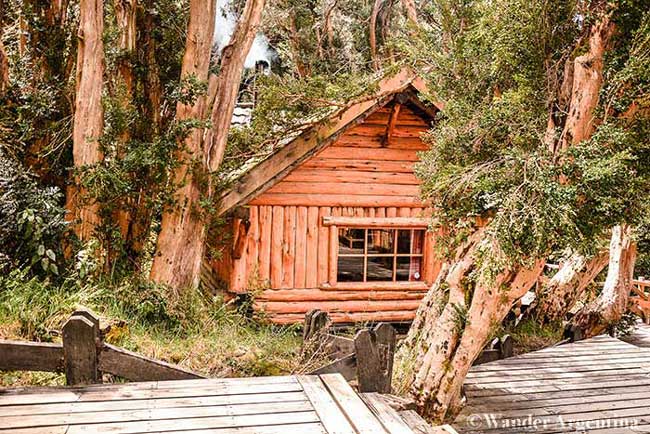
The second stop on the 7700-acre Victoria Island is Anchorena Port.
Here visitors see unique vegetation of Patagonia on a walk to Playa del Toro, where there is cave art left by the former indigenous inhabitants. The Victoria Island and Myrtle Forest tour ends on a lovely volcanic sand beach.
Puerto Blest & Los Canteros Waterfall
The trip to Puerto Blest starts off with an hour-long sail through the Blest branch of Nahuel Huapi Lake and past Centinela Island, the resting place of Perito Moreno (the ‘Godfather’ of Argentina’s national parks) and passing the impressive Canteros Waterfall.
Here the hiking trail goes through the lush vegetation of the Valvidian Forest until reaching Los Cántaros Lake, where a 1,500 year old Larch tree can be observed.
After another short boat ride, the tour reaches Puerto Blest. Here visitors can see Lago Frías, yet another glacier-made lake which is famous for its bright viridescent water.
All of Bariloche’s lake excursions depart from Pañuelo Port, located 25 kilometers from downtown on the Llao Llao peninsula.
To get to Port Pañuelo visitors have the option to take public bus n°20, hire a car, or book the full service tours listed below, which include pickup:
⇒ Book the Isla Victoria and Arrayanes Forest Tour
The boats depart at 9:00 a.m. During the summer season there is a second excursion at 2:00 p.m.
‘Bariloche’s Scenic Road Trips: Short Loop and Long Loop’
‘Circuito Chico (Short loop) and Panoramic Point,’ a two-hour trip through the west part of Bariloche, includes stops at Pañuelo Port, San Eduardo Chapel, Tacul Village, Mount Llao Llao, Colonia Suiza, and Morenito Lake.
All along this route there are short easy hikes. One of the most popular is the Lago Escondido, or ‘Hidden Lake’ walking trail.
Another is the steep but short climb up Mount Llao Llao, and through the Arrayán (Myrtle) forest, similar to the myrtle forest found on Victoria Island.
There is also the longer 240 kilometer Seven Lakes ‘Circuito Grande’ (Large loop) tour which winds through the lakes district all the way north to the charming town of San Martín de los Andes, the gateway to Lanín National Park.
The Swiss Colony
On the ‘Circuito chico’ (short loop) tour, a not-to-be-missed stop is the Colonia Suiza (‘Swiss Colony’), 25 kilometers from downtown Bariloche.
This village was established the same year as Bariloche by the French-speaking Swiss family the Goyes, who crossed over from Chile.
The hard-working pioneers grew fruit and made preserves that they delivered along the Andean lakes in homemade boats.
Visitors may want to schedule a visit to the Swiss Colony at mealtime to try ‘curanto.’
‘Curanto’ means ‘hot rock’ in the Araucano language from Chile.
The elaborate ancient food preparation involves wrapping meat and vegetables in ‘nalca’ (rhubarb) or ‘maqui’ (wineberry) leaves and cooking them underground over hot stones.
Head to ‘Don Goye’, where Sr. Victor Goye, grandson of the village founders, cooks up curanto every Wednesday and Sunday (reservations recommended).
Also worth a visit is the village museum where another Goye descendant oversees a collection of knick-knacks from the Swiss Village’s original pioneer families.
On Sundays there is an artisan fair in the Swiss Colony.
Sports and Activities to Do Around Bariloche
A notable attraction of Bariloche is its setting in an ecologically diverse area.
Within 100 kilometers there are three different ecosystems: grassland plains, natural woodland, and mountainous rainforests. The area lends itself to all sorts treks and outdoor activities.
Hiking and Mountaineering
Since its founding of Bariloche has enjoyed a reputation as a mountaineering paradise.
Here Europeans escaped a tumultuous post-war Europe while practicing skiing, trekking and mixed rock and ice climbing.
The Club Andino, or Andean Club, formed by Europeans who settled in the area, was central to establishing the outdoor industry and today visitors of all fitness levels enjoy trails ranging from short, easy day hikes to ten-day hut-to-hut treks.
Skiing and Snowboarding in Bariloche
The ‘Switzerland of Argentina,’ is quite cold and snowy in winter with freezing temperatures at night and warmer temperatures during the day.
Hiking and vehicle tours are limited due to snow and ice, but when it comes to winter sports, Bariloche is one of South America’s top ski and snow sport destinations.
Snowboarding, backcountry skiing, snowmobiling, quad rides, snowshoeing and sledding, are mainly enjoyed on Cerro Catedral, South America’s largest ski resort.
Smaller resorts nearby such as Piedras Blancas (White Rocks), Cerro Otto and Cerro Campanario are great for beginners too.
Visitors can book a ‘baptism’ in any ski/snowboard school to get a basic idea of how to ski or ride a snowboard and then explore the diverse piste on their own.
Rafting and Kayaking
This area of Patagonia has dozens of bodies of water, ranging from placid lakes to class five river rapids.
Beginners to advanced river rafters can hire a guide for an exciting rafting voyage down the Manso Inferior or Limay Rivers.
The best time to take a rafting excursion is from November to February. It will be a bit colder, but prices are more accessible in the shoulder season months of October and March/April.
Kayakers have plenty of lakes to choose from, among them Azul, Foyal, Moreno, Mascardi, Gutierrez, Guillermo, and Nahuel Huapi.
Nahuel Huapi lake is also popular for standup paddle and sailing excursions.
Horse Riding
Horseback riding is available in the national park. Excursions through beautiful scenery can be booked for a few hour ride up to a day-and-a-half.
Beginners are welcome as the horses are well-trained by the local gauchos (cowboys).
Road & Mountain Biking
Those fit enough for the hills around Bariloche can enjoy an abundance of bike rides.
Popular rides on road bikes are the ‘circuito chico’ (the ‘short loop’ mentioned above) or a shorter day trip to the Swiss Colony and back.
Rugged mountain bike trails include Cascada de los Duendes and Virgin de los Nieves.
During the late spring and summer mountain bikers can cheat by grabbing the ski lift up Mount Cathedral with their bike and riding down the 700 meter drop.
Sport Fishing
November to April is this area of Patagonia’s fishing season. Bariloche is very popular for fly fishing, spinning and trolling.
The most popular lakes for sport fishing in the Bariloche area are Mascardi, Steffen, Los Moscos, Hess, Roca and Fonk lakes, in the southern part of the National Park.
In the Traful River valley it’s said that even the unluckiest fishermen or women are almost guaranteed a bite. Here there are huge salmon as well rainbow, brook and brown trout.
A fishing permit can be purchased at the park’s administrative office or in kiosks in downtown Bariloche. Don’t forget to get a permit, as illegal fishing is taken seriously and fines are steep.
During the off-season fishing is catch-and-release only.
Sport Hunting
Hunting in Patagonia is regulated by the National Park. Certain areas of Nahuel Huapi National Park are designated areas to hunt ciervo rojo and javalí (red deer and boar), which are considered invasive species because they prevent the regrowth of the forest.
Hunters must get a permit for their guns before entering the country. Plan with plenty of time because the permit also needs to be notarized.
Once in Argentina, hunters must get a hunting permit from the provincial government.
Check this link to get learn about how to meet the requirements to hunt in Argentina.
(*This blog encourages responsible, sustainable travel and does not promote sport hunting. We urge you to consume the meat or donate it to a local community soup kitchen to eat.)
Paragliding
Paragliding, known as parapente in Spanish, is a popular, if newer, past time for the adventurous in Bariloche. No experience in needed to do a tandem jump here (although we would recommend travel insurance!)
Make sure an introductory class is included with the jump — any reputable paragliding company will have a thorough preparation class. The most popular take off point for paragliding is Mount Otto.
Ziplining
Ziplining is among the more modern activities that can be enjoyed in Bariloche.
Ziplines offer a chance to see the Patagonia forests from high up while enjoying a gravity-induced adrenaline rush.
Find the zipline at the Piedras Blancas resort on Mount Otto. (You can book a cable car ride to the top of Mount Otto here).
Getting to and Around Bariloche
Traditionally domestic travelers have taken the long but comfortable 24-hour bus ride to reach Bariloche by bus.
Today flying to Bariloche is more accessibly priced, thanks to the introduction of budget airlines to Argentina, but when making reservations beware that delays and cancellations are frequent on the budget airlines.
Bariloche’s airport is only ten minutes from town and getting a taxi there is much more straight forward than at Buenos Aires’ international airport.
Public transportation is somewhat sparse in Bariloche, with a public bus service being the only local means of transportation.
Bus riders will need a subte smart card that can be purchased in convenience stores in Buenos Aires, Bariloche or other major cities of Argentina.
Popular lines such as the 10 to the Swiss Colony and Cerveceria Patagonia and the 20 to Puerto Pañuelo run all night.
Check the local bus schedule here.
Hitchhiking is still common around Bariloche. Budget travelers who aren’t afraid to use their thumb will probably have decent luck hitchhiking around here if they look like they don’t smell and speak a little Spanish.
Renting a car is a good option to take popular road trips around the area such as the circuito chico, or the circuito grande (Seven Lakes route) and hikes in areas outlying Buenos Aires.
In the winter, skiers and snowboarders may want a car to get to the resorts if their hotel is not within walking distance, as the bus to Cerro Catedral ski resort from downtown only leaves once an hour.
When to Go to Bariloche
Most visitors go to Bariloche in the winter or summer.
In the summertime the city receives a lot of porteños (people from Buenos Aires) looking to escape the city heat and enjoy activities on the lakes, as well as international tourists, among them many hikers.
For skiing and other snow sports visitors will want to go to in the winter months between June and September, with July and August being the high season.
Be aware when booking your trip that Bariloche is the traditional destination for students taking their winter senior trip. The town becomes overrun with high school students from mid-July to early August (when Bariloche also has its two-day ‘Snow Festival’).
During that time the buses fill up quickly, the lift lines are long, and a lot of amateur skiers are on the slopes.
Going to Bariloche in the off-season can be a good way to save money.
In June, at the beginning of the ski season, there may not be much snow, but early September is a good time to enjoy spring-like conditions on the slopes and avoid the throngs of high school kids.
As in Buenos Aires, the spring months of October and November are lovely in Bariloche and are good months to enjoy spring flowers and bird watching.
Accommodations in and around Bariloche
The accommodations in Bariloche ranges from romantic getaways tucked into the mountains to party hostels in the city, family-friendly resorts along Nahuel Huapi lake and basic mountain huts for hikers run by the Andean Club
The most famous hotel in Bariloche —if not all of Argentina — is the luxury Llao Llao Hotel & Resort, 26 kilometers from downtown.
It offers all the usual five-star resort amenities, an 18-hole golf course, five in-house restaurants and amazing views of Mount Tronador and Mount Lopez.
In and around the town of Bariloche Hosteria del Lago and La Cascada are old standbys that offer a good value and amazing views.
Hostels are more likely to adjust to backpacker budget than private suites. One well-run hostel popular for its lake view is the Hostel Inn.
Those who want to be closer to nature and hiking trails can try the all-wood cozy Fortaleza Hostel, a twenty minute bus ride outside of town.
Even more further afield and closer to nature is the historic Hotel Puerto Blest, on the shores of Lago Friás, 44 kilometers from downtown Bariloche.
The reasonably-priced three-star hotel has a jacuzzi and is a perfect location from which to explore the Valvidian Forest, Mount Tronador and the Black Glacier.
— Daniela Massolo
*None of the businesses mentioned in this article are sponsored placements. While many blogs earn income by paid placements, we prefer to provide unbiased opinions and instead work directly with our wonderful guests to offer excellent value trips and services.
Feel free to get in touch and ask us about our customized travel packages — no overseas travel agent can match our great value vacation packages.
→ Four days Trekking & Kayak in Bariloche Tour
→ Buenos Aires, Iguazu Falls & Classic Patagonia
⇒ See all Day Tours in Bariloche
